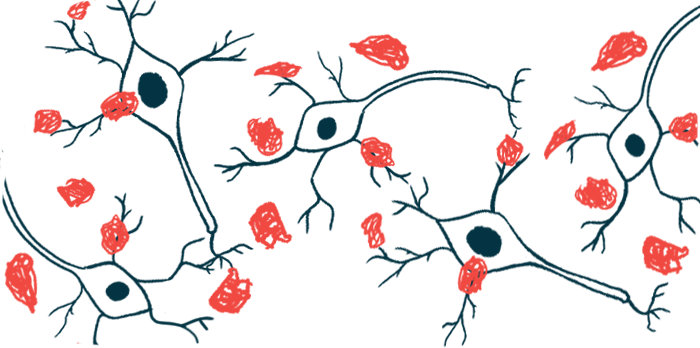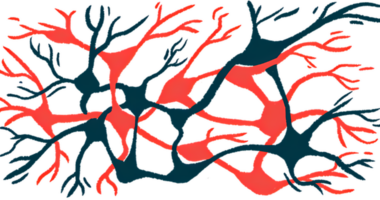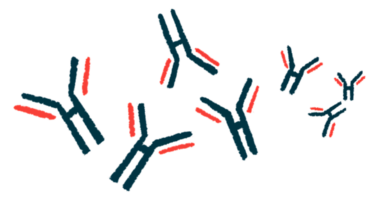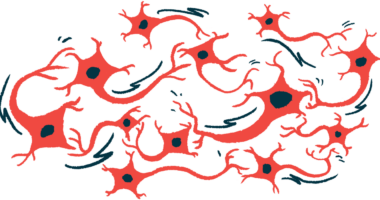Targeting specific alpha-synuclein region may thwart toxic aggregation
In Parkinson's, protein forms oligomers that accumulate into Lewy bodies

A region in the alpha-synuclein protein has been identified as a possible target for inhibiting the conversion of oligomers — early aggregates, or clumps, of the protein — into toxic fibrils, a hallmark of Parkinson’s disease, according to a recent study.
Mutations in this region are also associated with certain types of familial Parkinson’s, a form of the disease that affects people of a younger age.
“Our discovery could lead to the development of specific peptides that can target these mutated forms of alpha-synuclein and, therefore, a personalized therapy approach for those suffering from familial Parkinson’s disease. We are already working on developing these molecules,” Salvador Ventura, director of the Protein Folding and Conformational Diseases Research Group at the Universitat Autònoma de Barcelona, Spain, and coordinator of the study, said in a press release.
The study, “A Targetable N-Terminal Motif Orchestrates α-Synuclein Oligomer-to-Fibril Conversion,” was published in the Journal of the American Chemical Society.
Parkinson’s disease is caused by the progressive dysfunction and death of neurons, or nerve cells, responsible for producing dopamine, a signaling molecule the cells use to communicate and that’s involved in motor control.
It’s not fully understood why these neurons die in Parkinson’s, but the formation of clumps by alpha-synuclein is thought to be important. Alpha-synuclein’s clumping is a dynamic process wherein the protein forms oligomers that are composed of a few protein units that form toxic fibrils that accumulate into Lewy bodies.
This makes alpha-synuclein oligomers promising targets for diagnosing and treating Parkinson’s, particularly in its early stages. The molecules are difficult to target and block due to their transient and highly dynamic nature, however.
The researchers had previously identified a small molecule, the bacterial peptide phenol-soluble modulin alpha3 (PSM alpha3), as able to bind to and inhibit alpha-synuclein’s aggregation into oligomers. Peptides are short chains of amino acids, the building blocks of proteins
Finding where binding to alpha-nuclein protein occurs
Here, they were able to specifically identify where, how, and at which stage PSM alpha3 binding to alpha-synuclein occurs, therefore landing on a key region in the protein involved in converting oligomers into toxic fibrils.
“We identified the structure’s sequence that is essential for the conversion of oligomers to fibrils, thus opening a new field of exploration in the design of molecules aimed at targeting oligomers. By leveraging this region, we can develop new molecules that mimic the properties of PSM [alpha]3 with a much higher affinity and efficacy,” Ventura said.
The peptide binds to one end of the protein, called the N-terminus, which regulates the oligomer-to-fibril conversion process. On binding, the peptide also covers other adjacent regions of the protein, called P1 and P2, that are critical for the transition to disease-causing forms of alpha-synuclein.
“This region is an ideal therapeutic target, because it is only recognized by peptides when it is part of the oligomers; this allows us to target the aggregates without impacting the functional … form of alpha-synuclein, which is necessary for proper brain function,” Ventura said.
The study also aided in understanding the molecular mechanisms behind familial Parkinson’s, which is often linked with mutations in the P2 region of alpha-synuclein. This includes the G51D mutation, associated with one of the most aggressive forms of the disease.
Researchers found the mutation causes changes in the protein structure that delay oligomer-to-fibril conversion, causing long-lasting oligomers to accumulate that aren’t efficiently processed by the cellular mechanisms, which work to keep them disaggregated.
Moreover, oligomers of alpha-synuclein retain elements of this disaggregation machinery, preventing them from performing their normal activity of maintaining the proper structure and functioning of proteins within neurons. This could explain why people with hereditary mutations have an early onset of Parkinson’s disease.
“Overall, our findings unveil a new targetable region in [alpha]-synuclein oligomers, advance our comprehension of oligomer-to-amyloid fibril conversion, and reveal a new facet of [alpha]-synuclein [disease-causing] mutations,” the researchers said.







